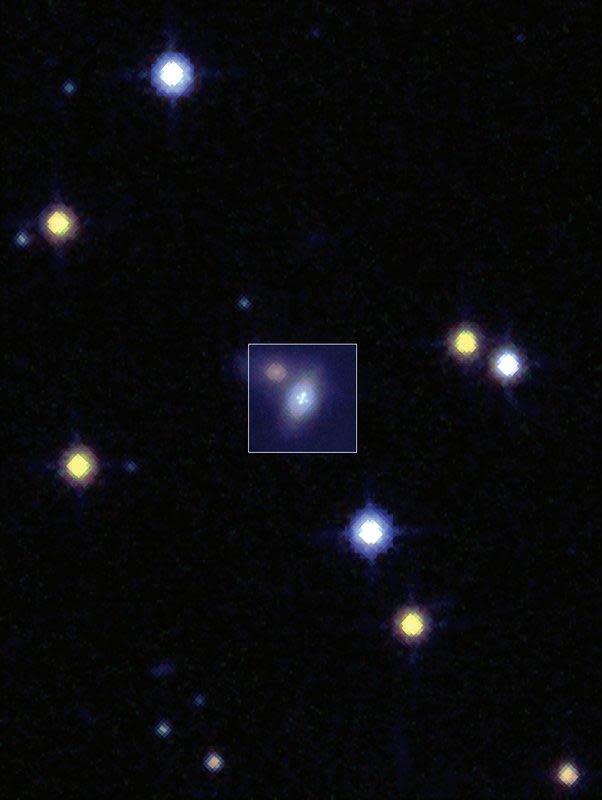Astronomers capture "bizarre" star explosion warped by gravity
Seeing a supernova, or an exploding star, is a unique spectacle in itself. But recently, astronomers have found something even more unique: A star explosion so "extremely warped" that it looked like it was multiple images in the sky.
So how did this happen?
It's not magic, according to the California Institute of Technology, but an effect known as "gravitational lensing," which happens when gravity from a dense object in space "distorts and brightens the light of an object behind it." In the case of supernova SN Zwicky, it was the gravity of another galaxy that impacted its appearance.
Astronomers have captured a bizarre image of a supernova whose light was so warped by the gravity of another galaxy that it appears as multiple images in the sky. The supernova was first observed using @ztfsurvey.https://t.co/WzhJorcuLv
— Caltech (@Caltech) June 12, 2023
An event such as this is "among the biggest challenges in astronomy," researchers said in the journal Nature Astronomy, as it entails catching "two very rare phenomena" – "catching the transient signal of a stellar explosion in a distant galaxy and observing it through a nearly perfectly aligned foreground galaxy that deflects light towards the observer."
And though hard to find, it's been long discussed among scientists. It was first predicted by Albert Einstein's general theory of relativity, NASA says.
Christoffer Fremling, an astronomer at the Caltech Optical Observatory who studies supernovas, is the one who came across the rarely observed warped supernova.
"I was observing that night and was absolutely stunned when I saw the lensed image of SN Zwicky," they said. "We catch and classify thousands of transients with the Bright Transient Survey, and that gives us a unique ability to find very rare phenomena such as SN Zwicky."

The Bright Transient Survey is research being conducted at Caltech that is the "largest spectroscopic supernova survey ever conducted," according to its website. Researchers working on the project survey the entire Northern sky every few nights to provide a more thorough view of space.
SN Zwicky is a Type Ia supernova, which according to Caltech, involves a star going out with a bang.
"These are dying stars that end their lives with a light show that is always the same in brightness from event to event," Caltech said in its news release.
Study co-author Joel Johansson said this type of supernova lets researchers "see further back in time because they are magnified."
"Observing more of them will give us an unprecedented chance to explore the nature of dark energy," Johansson said.
Rare occurrences like SN Zwicky also help scientists "probe the amount and distribution of matter at the inner core of galaxies," the study's lead author Ariel Goobar said – and could even help uncover secrets of the universe.
"What are missing components needed to model the expansion history of the universe? What is the dark matter that makes up the vast majority of the mass in galaxies?" Goobar said. "As we discovered more 'SN Zwickys' with ZTF and the upcoming Vera Rubin Observatory, we will have another tool to chip away at the mysteries of the universe and find answers."
Federal Reserve pauses interest rate hikes as inflation cools
Tori Bowie had concerns about hospitals before death from childbirth complications
Inside the courtroom as Trump was arraigned on federal charges

